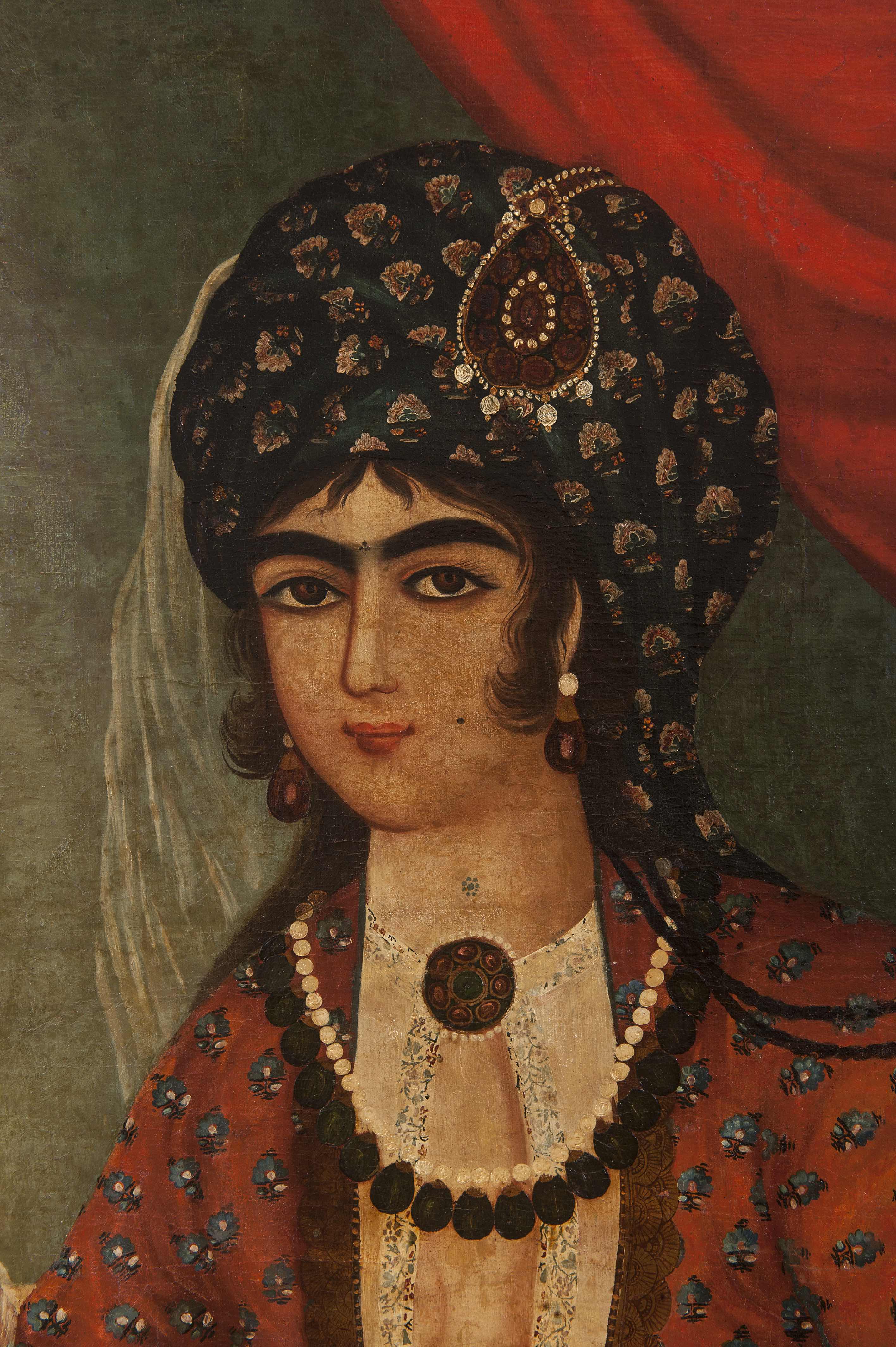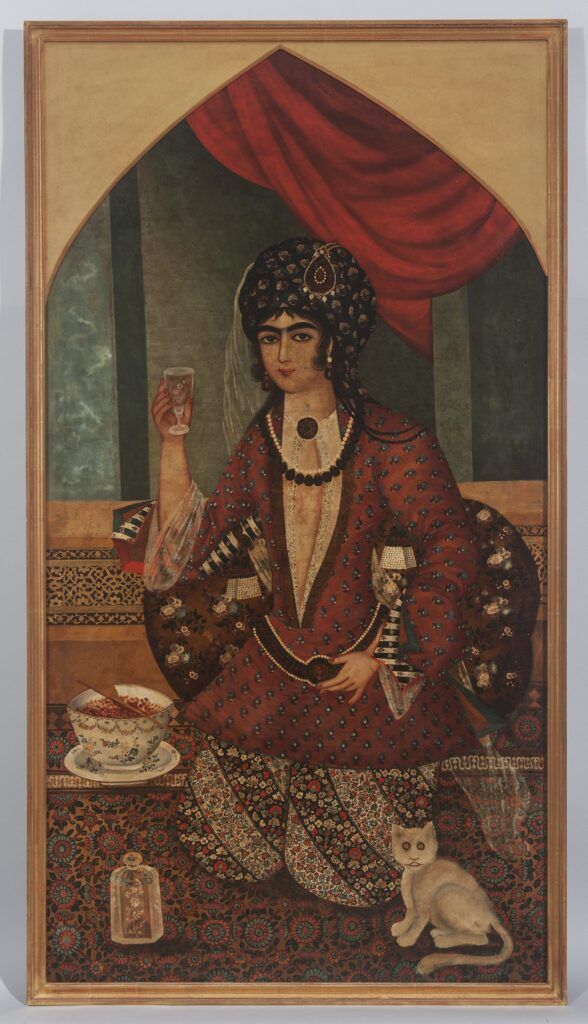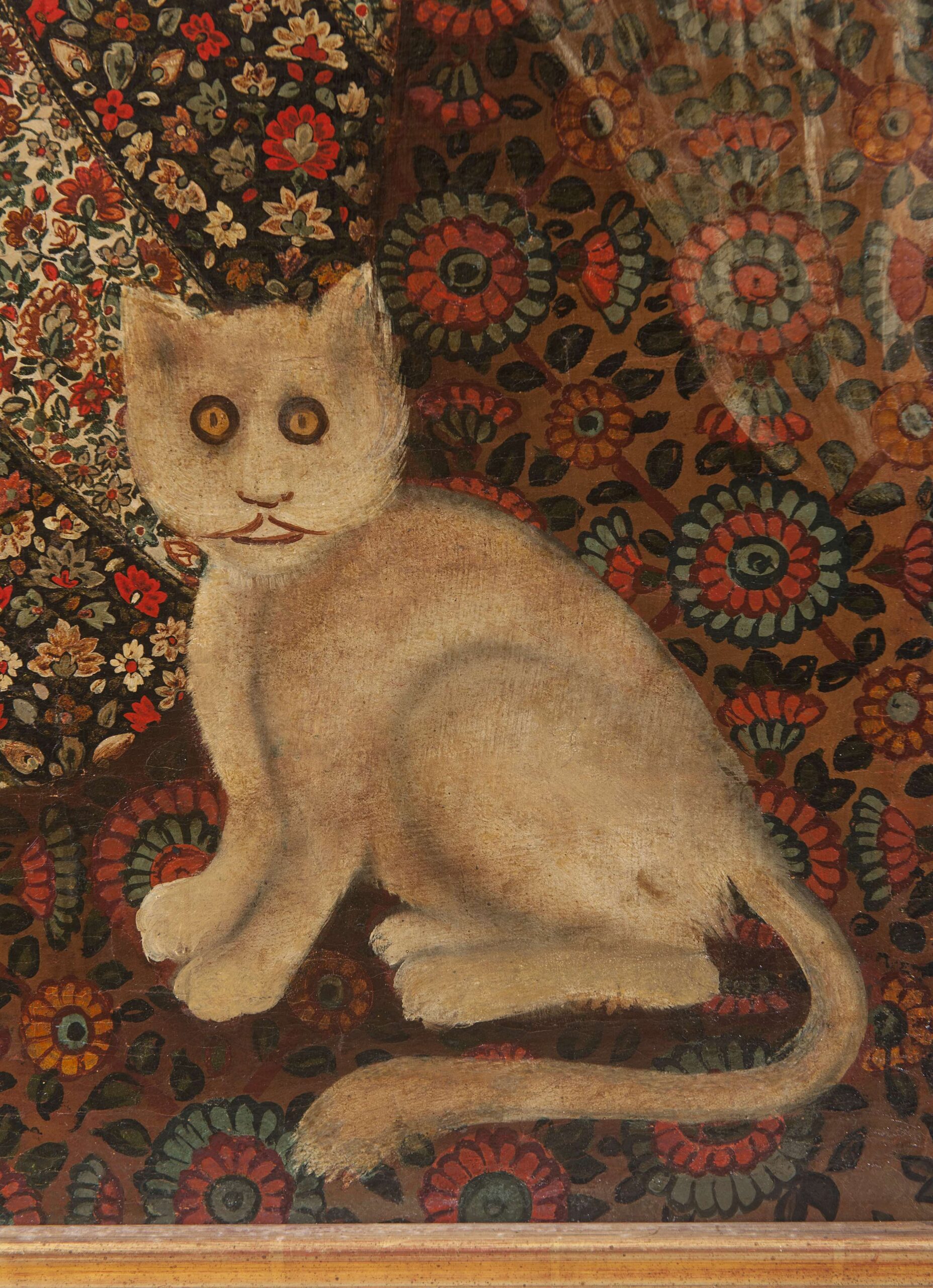Artwork Spotlight: Zand Painting

Shangri La Museum of Islamic Art, Culture & Design, Honolulu, Hawaiʻi (34.8) (Photograph: David Franzen, 2020).
Have you had a chance to see our historic Zand and Qajar paintings on display at Honolulu Museum of Art as part of Artist-in-Residence Navid Sinaki’s Infinite Garden exhibition? These paintings were a major source of inspiration for Sinaki’s digital animations – all appearing as characters in his animated tale on view at the Honolulu Museum of Art and Shangri La.

Shangri La Museum of Islamic Art, Culture & Design, Honolulu, Hawaiʻi (34.8) (Photograph: David Franzen, 2020).
Encouraged by its founding ruler, Karim Khan (1751–1779), the Zand Dynasty (1751–1794 ) produced a distinctive artistic style that left an indelible mark on Persian culture.
The depiction of flowers, fruit, and glassware became a hallmark of Zand painting. Items like the carved and gilded glass, patterned rug, and porcelain bowl filled with pomegranates would have highlighted the wealth and sophistication of international trade networks.
Notably, the figures in Zand and early Qajar paintings often blur distinctions of gender. This follows a longer tradition in Persian art and poetry of describing the physical beauty of various gender expressions in the same terms.

Shangri La Museum of Islamic Art, Culture & Design, Honolulu, Hawaiʻi (34.8) (Photograph: David Franzen, 2020).
What artwork would you create inspired by this painting?
What's your favorite detail on this artwork?
How is gender defined by you or your culture?
